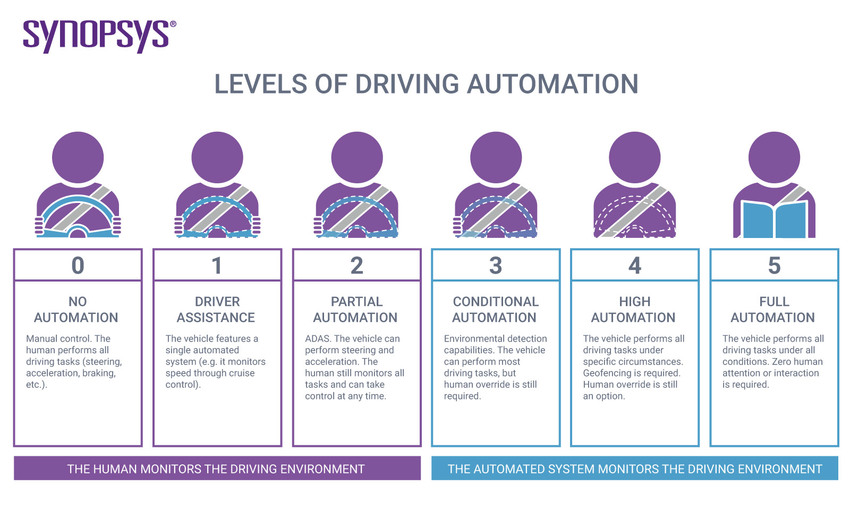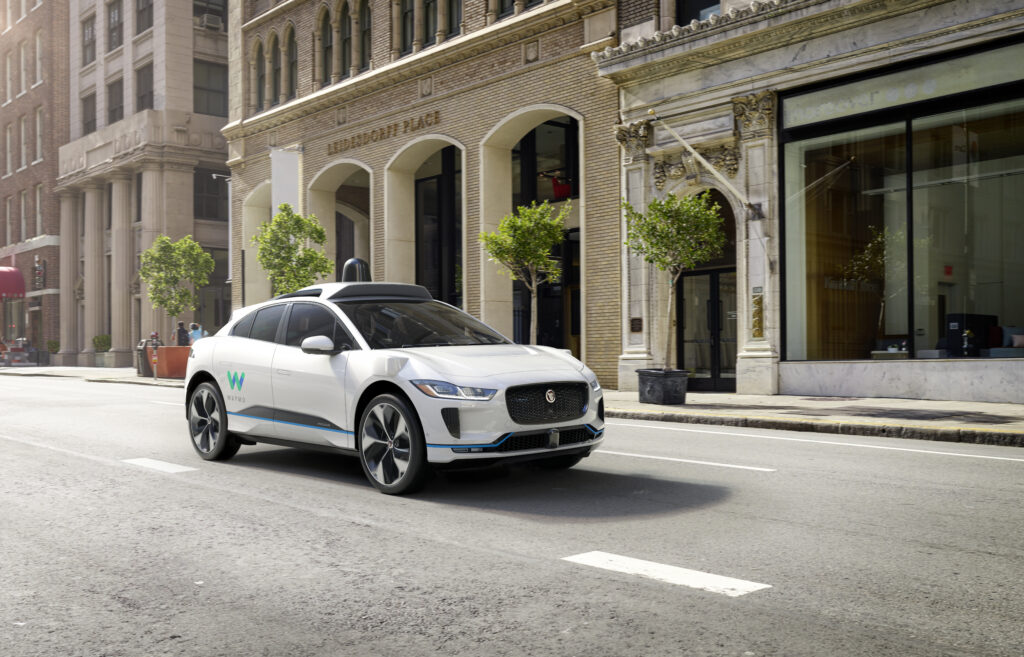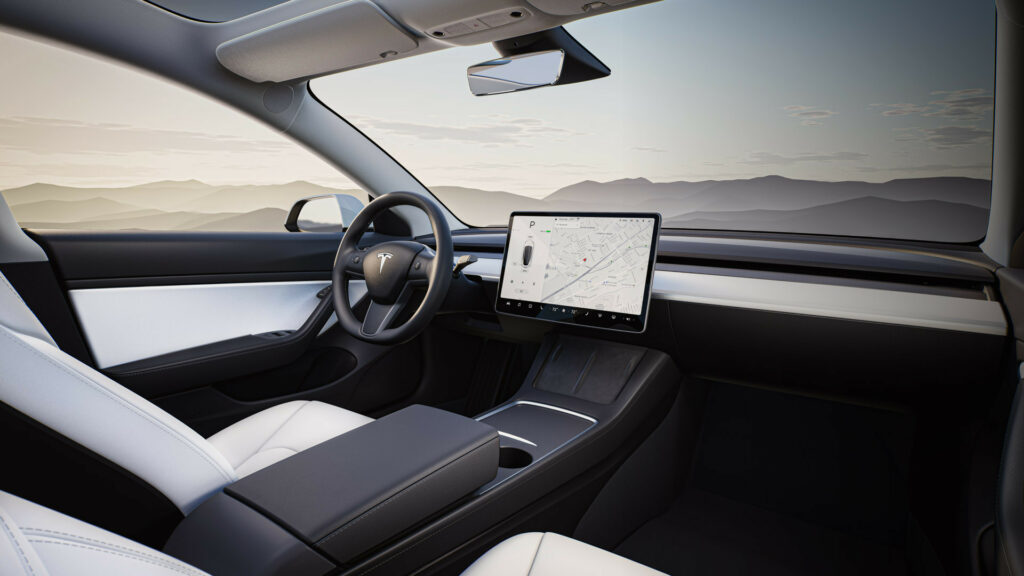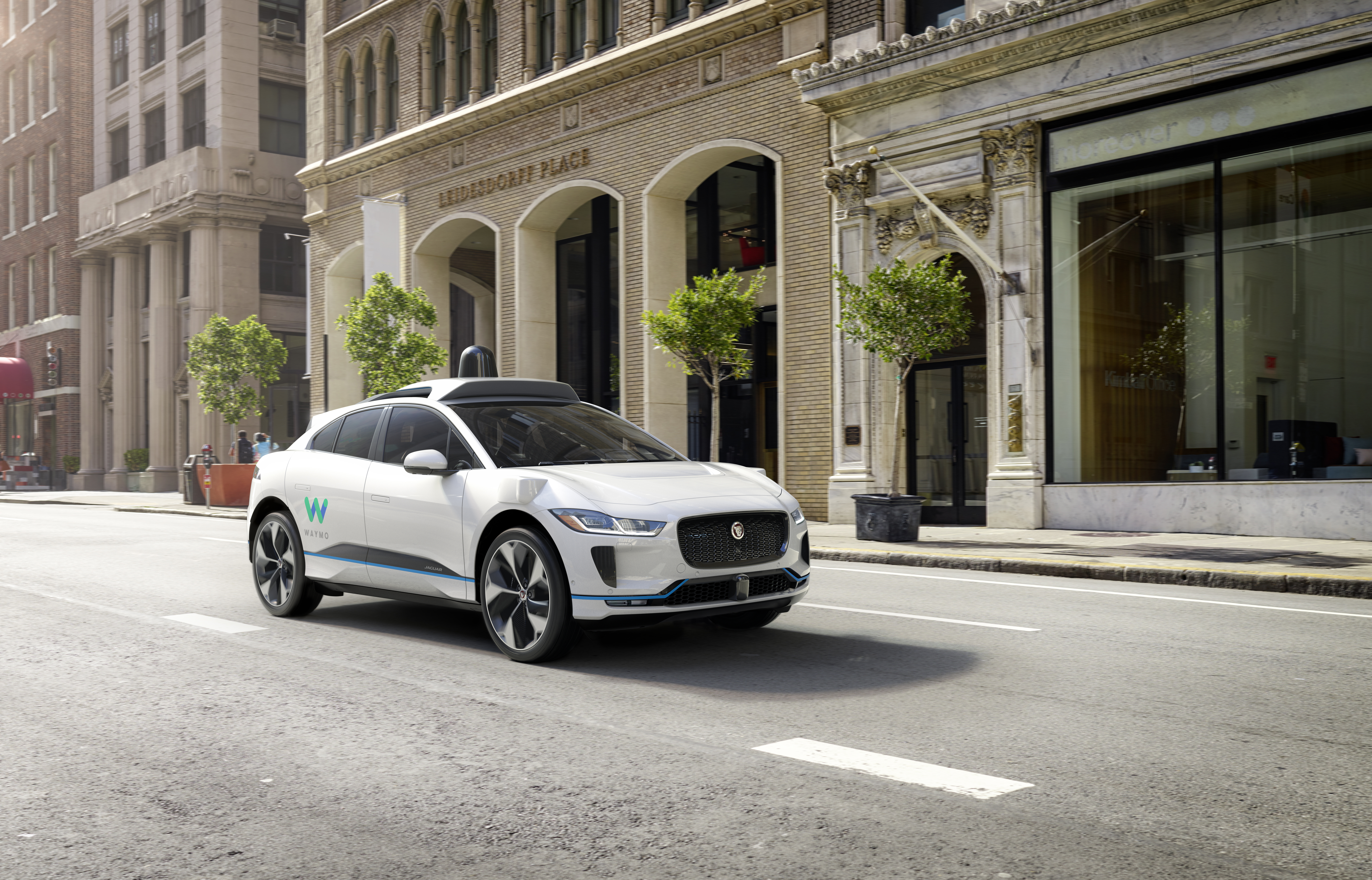Autonomous vehicles are capable of sensing the environment and fully operating the vehicle without the help of human drivers. In fully autonomous cars, the driver is not required to do anything at all while still being able to get from point A to point B. While most of the cars that can be purchased at the moment offer advanced driver assistance systems (ADAS), autonomous cars are currently only tested by different automakers and startups. Because distinguishing the different levels of automation was important as well, the SAE (Society of Automotive Engineers) defined 6 different levels of driving automation back in 2014. They are ranging from Level 0 (fully manual) to Level 5 (fully autonomous).

The terms self-driving and autonomous are currently often used interchangeably, but actually they have a slightly different meaning. While self-driving cars would fall under SEA Level 3 or 4 because a human driver has to be present all the time and also constantly ready to take over, autonomous cars could go anywhere without human help and are therefore limited to Level 5.
Making these fully autonomous vehicles is harder and more expensive than most of the startups predicted. That is the reason why these self-driving startups are now teaming up with tech giants like Alphabet (Google) or Amazon and big automakers like General Motors or Volkswagen. Aptiv has established a partnership with Hyundai, Waymo with Jaguar, Cruise with GM, Voyage with Fiat-Chrysler and Argo AI with Ford and Volkswagen. Currently, the only big exception that is building self-driving vehicles and operating fleets of them on their own is Tesla. But there are already rumors that Tesla is thinking about merging with or buying Daimler (Mercedes Benz).
Waymo
Waymo is one of the most well known players in this industry. It started as Google Self-Driving Car Project back in 2009. Waymo has already done millions of miles of testing in Arizona and California with additional safety drivers monitoring the system behind the wheel. From October 2020 they also started their services with fully driverless taxis in Phoenix, Arizona. While the Waymo vehicles are still a little too cautious around pedestrians, there are already a lot of really positive reviews of their driverless service.

Cruise
Cruise, acquired by General Motors back in 2016, unveiled their shuttle van in San Francisco back in January 2020. The name of the orange, white and black van with sliding doors and two sets of three seats facing each other is Origin. It is meant to be shared by riders in a ride-hail service and will be starting in San Francisco. Cruise is planning on offering their service significantly cheaper than current, human-powered ride-hail services like Uber and Lyft. They also announced a separate Origin configured for carrying packages. Cruise is currently starting their self-driving-taxi service with five modified Chevrolet Bolts in San Francisco with the plan to operate truly driverless cars before the end of the year.

Zoox
Zoox, acquired by Amazon for roughly $1.2 billion in June 2020, recently announced their robotaxi. The company was founded in 2014 and has been working on their robotaxi for the last six years now. Zoox is planning on using their autonomous vehicles on a ride-hail network in large cities like Las Vegas and San Francisco. Because of this, their vehicle is able to drive bidirectionally and also offers a tight turning radius. These robotaxis will be able to run up to 16 hours on a charge and travel fully autonomously at speeds up to 75 miles per hour (approximately 120 kilometers per hour). Zoox has not announced a release date yet, but the technology from their robotaxis has been tested with other cars in San Francisco since 2017. The design of the Zoox vehicles is similar to a lot of other different autonomous vehicles revealed over the past few years like the Cruise Origin. Due to its rectangular shape, the robotaxi platform could also be used for packages.
“We’ve made the decision to maximize the interior space and minimize the exterior space,”
Jesse Levinson, Zoox’s Co-Founder and CTO
Tesla
While Tesla’s Full Self-Driving (FSD) feature was released as a closed beta to a few selected vehicles in October 2020, they are also aiming to release their FSD for all compatible Teslas by the end of this year. Since this feature was only rolled out to a limited number of people and is currently updated regularly, there is also limited knowledge about the functionality and safety of these features.
“Despite the name, the Full Self-Driving Capability suite requires significant driver attention to ensure that these developing-technology features don’t introduce new safety risks to the driver, or other vehicles out on the road,”
Jake Fisher, Senior Director of auto testing at Consumer Reports

Resources
https://www.synopsys.com/automotive/what-is-autonomous-car.html
https://www.wired.com/story/self-driving-cars-look-toasters-wheels/
https://www.wired.com/story/cruise-hit-san-francisco-no-hands-wheel/
https://www.wired.com/story/gms-sensors-room-6-no-steering-wheel/
https://www.wired.com/story/self-driving-tech-game-partnerships/
https://www.wired.com/story/guy-taking-viewers-driverless-rides-waymo/
https://www.caranddriver.com/news/a34306011/waymo-expands-driverless-taxi-more-people/
